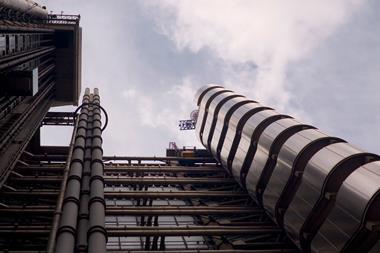It is one year this week since PWC liquidator Dan Schwarzmann walked through the doors of Independent. He talks to Christine Seib about his job
How did you become an insolvency practitioner with an insurance specialism?
Having qualified as an accountant I decided to specialise in insolvency and subsequently qualified as an insolvency practitioner. I chose insolvency as I wanted a job which allowed me to use a real mixture of skills, including commercial and technical skills.
After spending a number of years dealing with insolvencies across many industry sectors, I asked an insurance-related question at a conference I attended and as a result of this ended up working on the Andrew Weir scheme of arrangement - and the rest, as they say, is history. Over the past eight years I have been involved with many insurance entities in both solvent restructuring work and insolvencies.
What notable insurance insolvencies have you worked on?
I am a scheme administrator of Orion and its subsidiary, London and Overseas Insurance Company, Chester Street (formerly Iron Trades Holdings) and I am also a provisional liquidator of Independent, Black Sea and Baltic and Builders' Accident. I have also worked on Andrew Weir and North Atlantic.
What is provisional liquidation and why is it used more than liquidation for insolvent insurance companies?
An alternative to liquidation is provisional liquidation. The company's directors can apply to the court for the appointment of a provisional liquidator and the company is protected from creditor actions while a suitable scheme of arrangement is developed. A scheme is an agreement (or deal) between the company and its creditors and, in general, the main advantages of a scheme in respect of an insolvent company are:
The administration procedure (commonly used in larger reconstructions, such as Enron) has recently become available for insolvent insurance companies. This process will be used as an alternative to provisional liquidation while a scheme is developed.
How is it decided which insolvency practitioner deals with each insolvency?
It depends. It is usually the company directors or their advisers who would approach us to assist in a potentially insolvent situation. In our experience, the sooner we are approached the more options there are likely to be available to a company, and the higher the chance of a solvent restructuring. This avoids the inevitable disruption of insolvency and the need for the appointment of an insolvency practitioner.
How did you feel when you were chosen as one of the provisional liquidators appointed to Independent Insurance?
Privileged to have been selected to deal with such an important issue and determined that, as a team, we deliver the best results to creditors.
What has been the most challenging thing so far as provisional liquidator of Independent Insurance? Also what is the most satisfying or positive outcome so far?
The most challenging and most rewarding area for me has been ensuring the run-off continues in an orderly and efficient manner. In order to achieve this objective it has been essential to retain the expertise and knowledge of the staff who were previously handling the day-to-day issues at Independent.
Although more than 1,000 staff were made redundant we knew that the retention of the remaining staff was critical. To this end we set up a solvent entity - Aurora Corporate Services Ltd ("Aurora") - in order to continue the run-off work and provide a more secure future for the remaining employees. This entity is already winning new work from third parties, which is a positive step towards a long-term future for its employees.
It was an enormous challenge to keep the business together and fragmentation would have had disastrous consequences. The successful outcome is, in no small part, down to the hard work of the PWC and the Aurora staff and management, in particular to chief executive Ken Blanc.
How long do you expect to continue working on Independent?
There are still a number of significant issues which need to be dealt with before I could really give an accurate estimate of the timeframe.
What are the more difficult tasks still to come on Independent?
Working out a suitable scheme. We will need to be confident that stakeholders are happy with any proposed deal before issuing it to the market.
Has the provisional liquidation of Independent been different to any others you have worked on?
Yes, the fact the company was still writing live business created complications. For instance, tens of thousands of policies had to be cancelled following our appointment. The sheer scale of the job, in terms of number of policyholders and the liabilities, is also pretty much unprecedented in the sector.
How do you feel when a particular project finishes?
It takes great teams to finish complex assignments and I feel privileged to have been part of such super teams.
If you could tell people one thing that would surprise them about your job what would it be?
We are not just people who follow rule books - we thrive on finding commercial and innovative solutions.
Hosted by comedian and actor Tom Allen, 34 Gold, 23 Silver and 22 Bronze awards were handed out across an amazing 34 categories recognising brilliance and innovation right across the breadth of UK general insurance.











































